Information Technology > TEST BANK > TEST BANK Modern Database Management 13th Edition By Topi, Hoffer, Venkataraman, Complete Chapters (All)
TEST BANK Modern Database Management 13th Edition By Topi, Hoffer, Venkataraman, Complete Chapters 1 To 14
Document Content and Description Below
TABLE OF CONTENTS I. THE CONTEXT OF DATABASE MANAGEMENT 1. The Database Environment and Development Process II. DATABASE ANALYSIS AND LOGICAL DESIGN 2. Modeling Data in the Organization 3. T... he Enhanced E-R Model 4. Logical Database Design and the Relational Model III. DATABASE IMPLEMENTATION AND USE 5. Introduction to SQL 6. Advanced SQL 7. Databases in Applications 8. Physical Database Design and Database Infrastructure IV. ADVANCED DATABASE TOPICS 9. Data Warehousing and Data Integration 10. Big Data Technologies Difficulty: Moderate Classification: Concept AACSB: Information Technology 11. Analytics and Its Implications 2 12. Data and Database Administration with Focus on Data Quality Downloaded by Morris Muthii (muthiimorris68@gmail.com) ONLINE CHAPTERS 13. Distributed Databases 14. Object-Oriented Data Modeling Modern Database Management, 13e (Hoffer) Difficulty: Moderate Classification: Concept AACSB: Information Technology 3 Downloaded by Morris Muthii (muthiimorris68@gmail.com) Chapter 1 The Database Environment and Development Process 1) According to a McKinsey Global Institute Report, in 2010 alone, global enterprises stored more than: A) 1 terabyte of data. B) 3 gigabytes of data. C) at least 100 petabytes of data. D) more than 7 billion exabytes of data. Answer: D LO: 1.1: Define key terms. Difficulty: Easy Classification: Concept AACSB: Information Technology 2) Database management involves all of the following EXCEPT: A) collecting data. B) organizing data. C) design web pages. D) managing data. Answer: C LO: 1.1: Define key terms. Difficulty: Easy Classification: Concept AACSB: Information Technology 3) A database is an organized collection of A) logically B) physically C) loosely D) badly Answer: A LO: 1.1: Define key terms. Difficulty: Easy Classification: Concept AACSB: Information Technology 4) Legacy systems often contain data of A) poor; personal computers B) excellent; mainframes C) poor; mainframes D) excellent; workgroup computers Answer: C LO: 3.1: Define key terms. Difficulty: Moderate Classification: Concept AACSB: Information Technology related data. quality and are generally hosted on . 4 Copyright © 2019 Pearson Education, Inc. Downloaded by Morris Muthii (muthiimorris68@gmail.com) 5) Program-data dependence is caused by: A) file descriptions being stored in each database application. B) data descriptions being stored on a server. C) data descriptions being written into programming code. D) data cohabiting with programs. Answer: A LO: 1.2: Name several limitations of conventional file processing systems. Difficulty: Moderate Classification: Concept AACSB: Information Technology 6) Because applications are often developed independently in file processing systems: A) the data is always non-redundant. B) unplanned duplicate data files are the rule rather than the exception. C) data can always be shared with others. D) there is a large volume of file I/O. Answer: B LO: 1.2: Name several limitations of conventional file processing systems. Difficulty: Moderate Classification: Concept AACSB: Information Technology 7) Relational databases establish the relationships between entities by means of common fields included in a file called a(n): A) entity. B) relationship. C) relation. D) association. Answer: C LO: 1.3: Explain at least 10 advantages of the database approach, compared to traditional file processing. Difficulty: Moderate Classification: Concept AACSB: Information Technology 8) A(n) is often developed by identifying a form or report that a user needs on a regular basis. A) enterprise view B) reporting document C) user view D) user snapshot Answer: C LO: 1.3: Explain at least 10 advantages of the database approach, compared to traditional file processing. Difficulty: Moderate Classification: Concept AACSB: Information Technology 9) A graphical system used to capture the nature and relationships among data is called a(n): A) XML data model. B) hypertext graphic. Downloaded by Morris Muthii (muthiimorris68@gmail.com) C) relational database. D) data model. Answer: D LO: 1.3: Explain at least 10 advantages of the database approach, compared to traditional file processing. Difficulty: Moderate Classification: Concept AACSB: Information Technology 10) Data that describe the properties of other data are: A) relationships. B) logical. C) physical. D) metadata . Answer: D LO: 1.3: Explain at least 10 advantages of the database approach, compared to traditional file processing. Difficulty: Moderate Classification: Concept AACSB: Information Technology 11) Metatdata typically describes all of the following EXCEPT: A) data definitions. B) length. C) allowable values. D) location on disk. Answer: D LO: 1.3: Explain at least 10 advantages of the database approach, compared to traditional file processing. Difficulty: Moderate Classification: Concept AACSB: Information Technology 6 . Downloaded by Morris Muthii (muthiimorris68@gmail.com) 12) A person, place, object, event, or concept about which the organization wishes to maintain data is called a(n): A) relationship. B) object. C) attribute. D) entity. Answer: D LO: 1.3: Explain at least 10 advantages of the database approach, compared to traditional file processing. Difficulty: Moderate Classification: Concept AACSB: Information Technology 13) are established between entities in a well-structured database so that the desired information can be retrieved. A) Entities B) Relationships C) Lines D) Ties Answer: B LO: 1.3: Explain at least 10 advantages of the database approach, compared to traditional file processing. Difficulty: Moderate Classification: Concept AACSB: Information Technology 14) All of the following are primary purposes of a database management system (DBMS) EXCEPT: A) creating data. B) updating data. C) storing data. D) providing an integrated development environment. Answer: D LO: 1.3: Explain at least 10 advantages of the database approach, compared to traditional file processing. Difficulty: Difficult Classification: Concept AACSB: Information Technology 15) With the database approach, data descriptions are stored in a central location known as a: Downloaded by Morris Muthii (muthiimorris68@gmail.com) A) server. B) mainframe. C) PC. D) repository. Answer: D LO: 1.6: List and briefly describe nine components of a typical database environment. Difficulty: [Show More]
Last updated: 2 months ago
Preview 4 out of 17 pages

Loading document previews ...
Buy this document to get the full access instantly
Instant Download Access after purchase
Buy NowInstant download
We Accept:

Reviews( 0 )
$9.50
Can't find what you want? Try our AI powered Search
Document information
Connected school, study & course
About the document
Uploaded On
Apr 01, 2025
Number of pages
17
Written in
Additional information
This document has been written for:
Uploaded
Apr 01, 2025
Downloads
0
Views
14

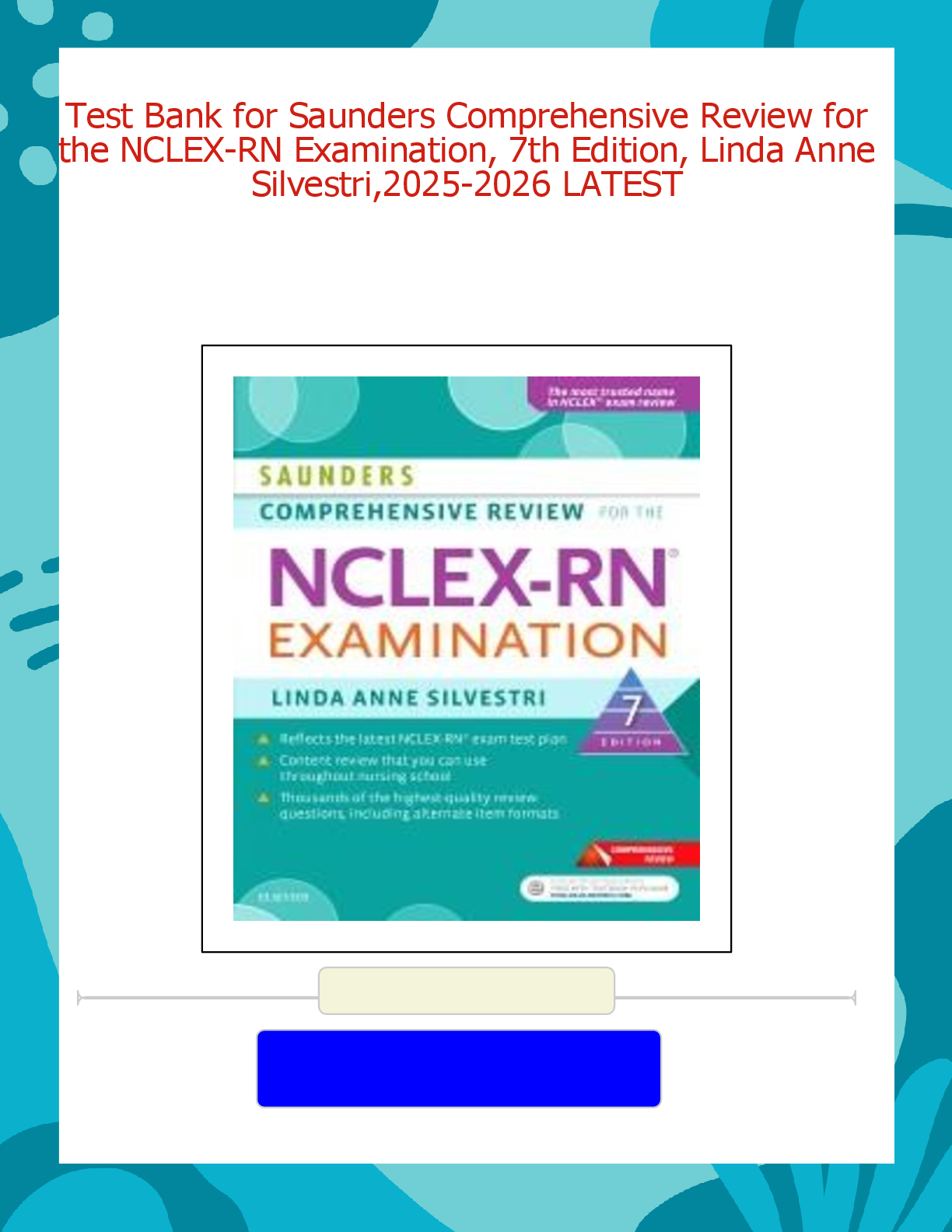
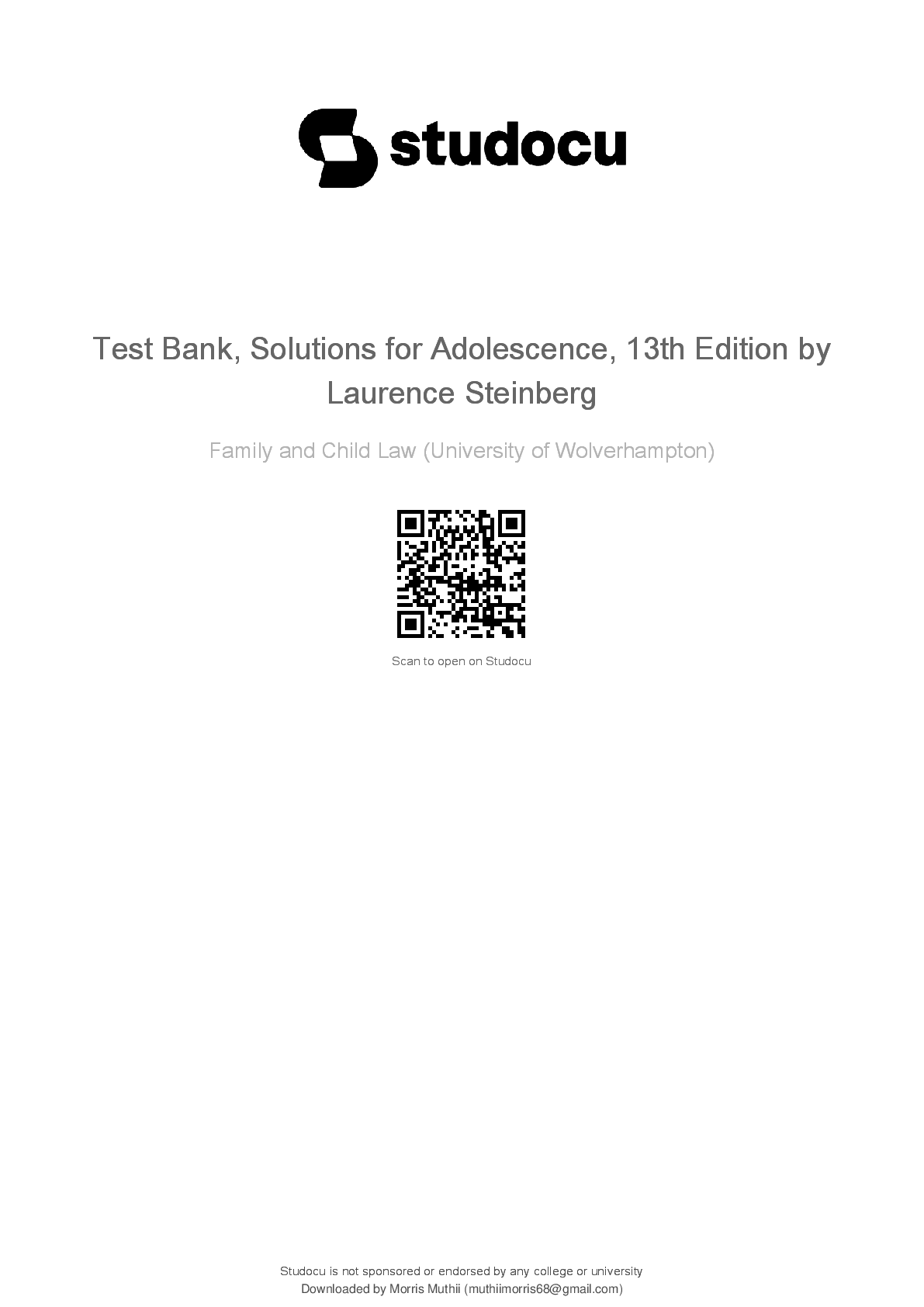
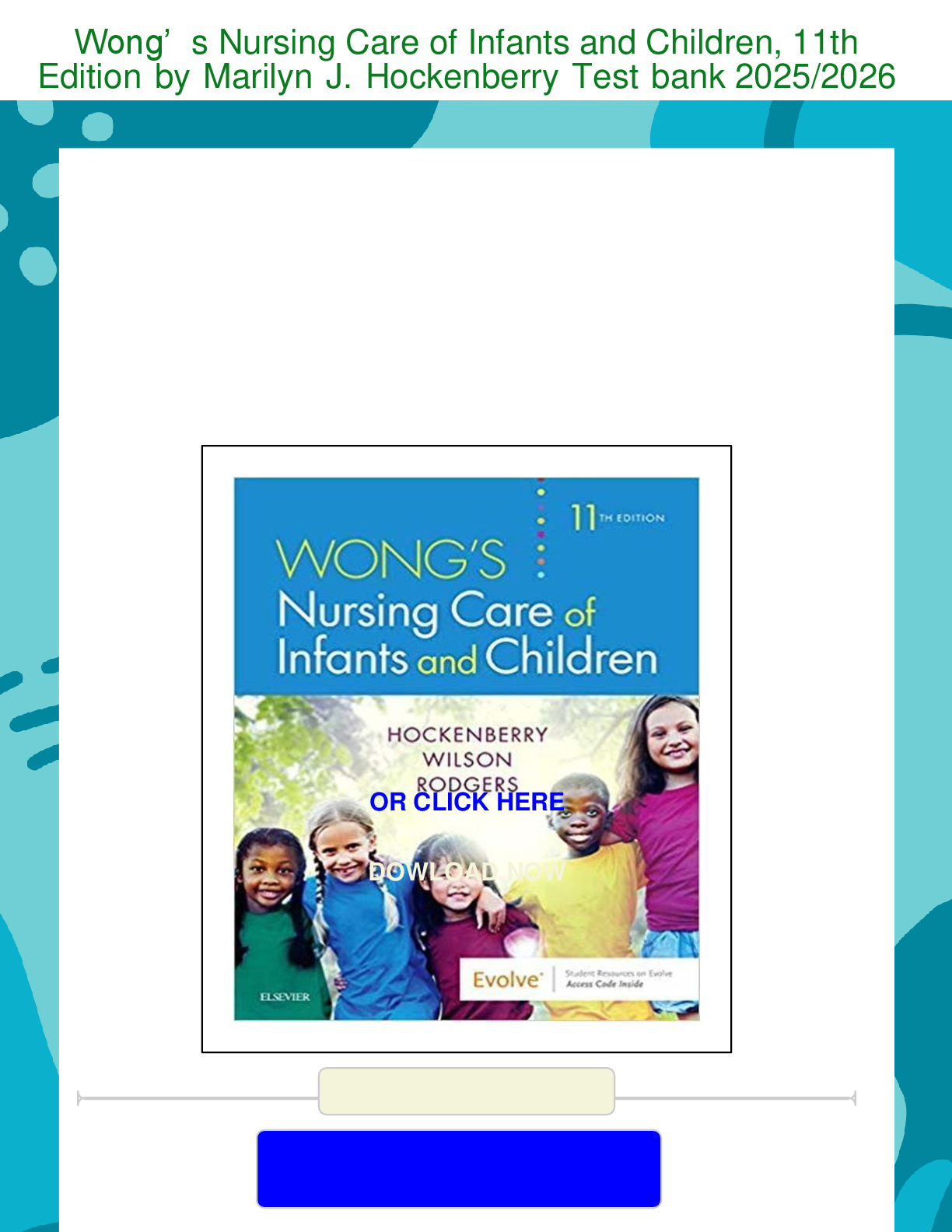

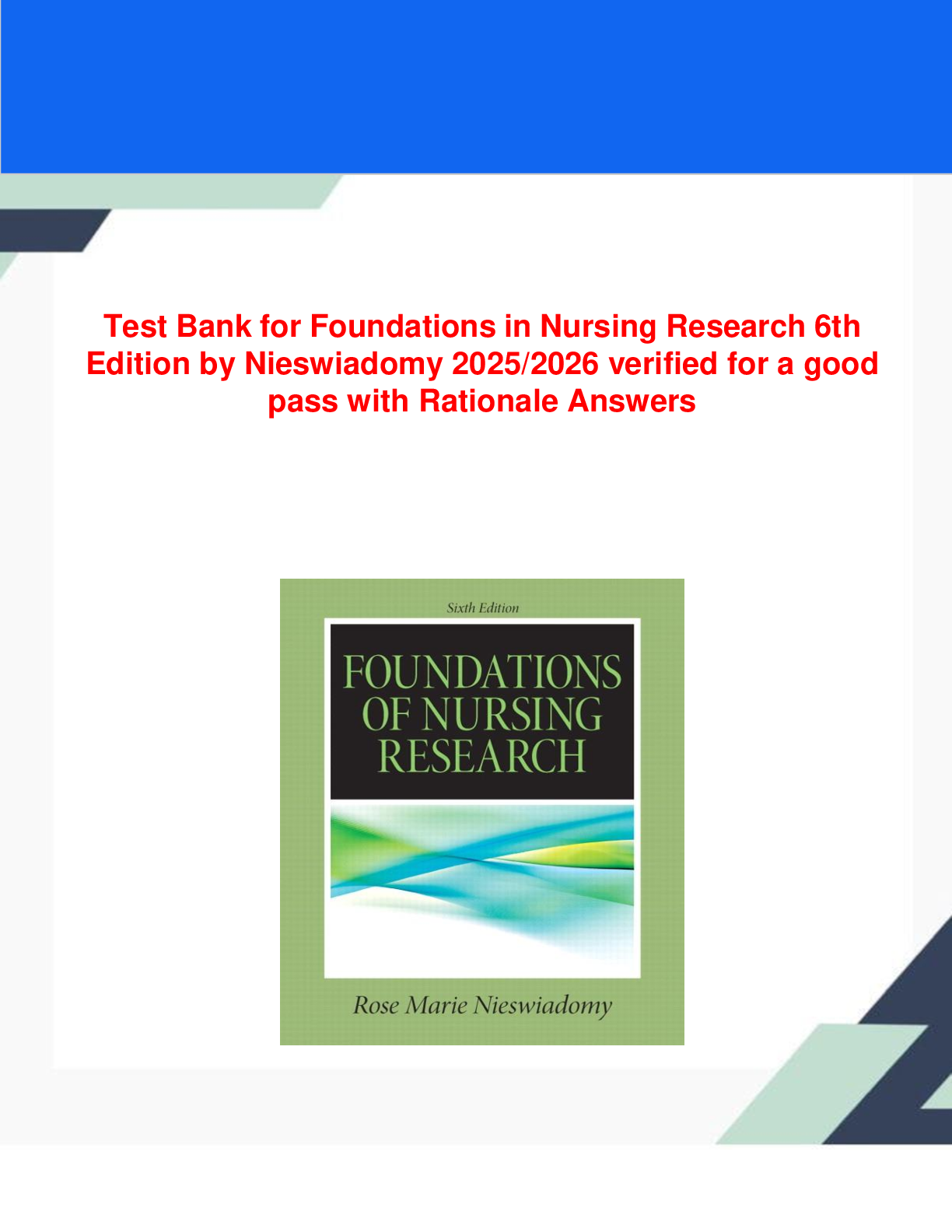
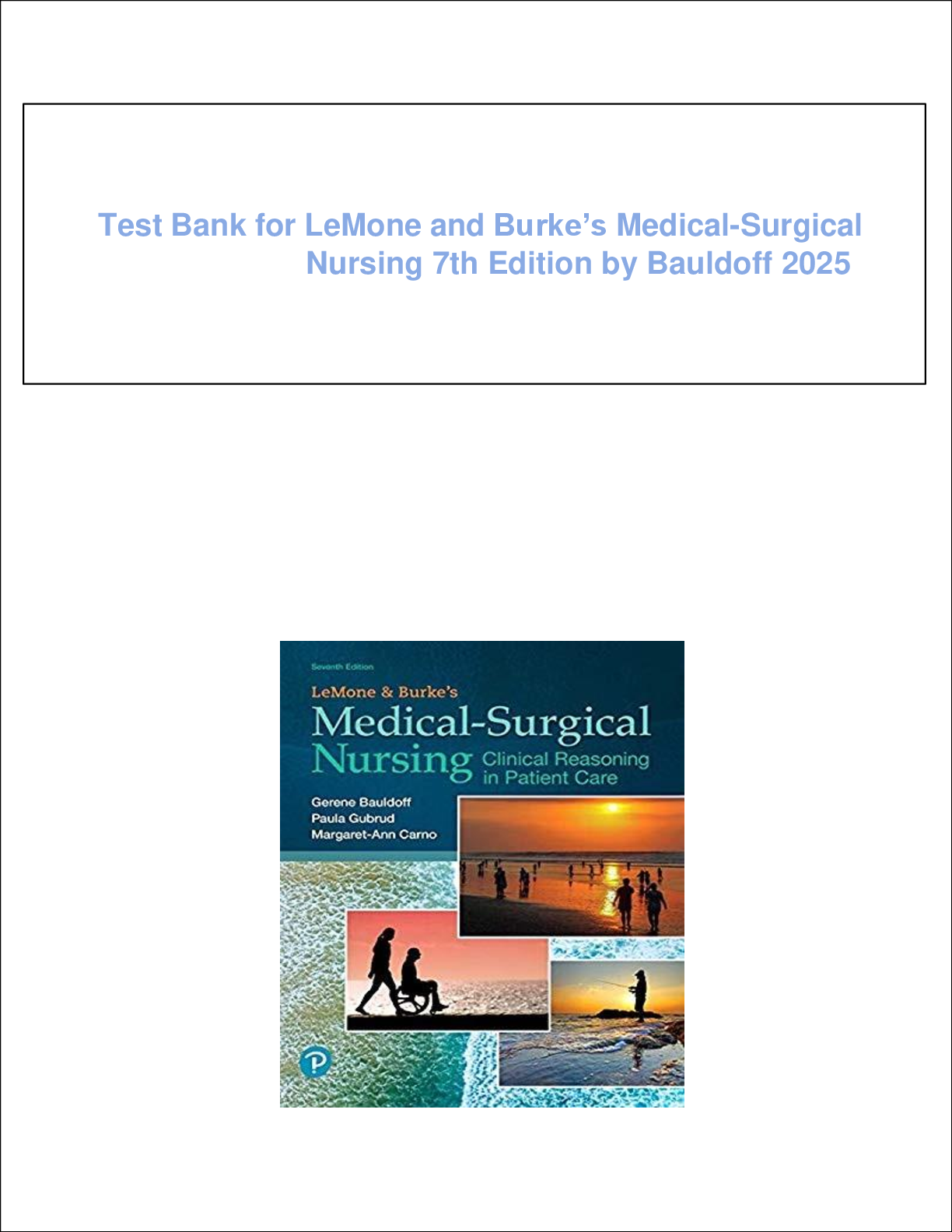
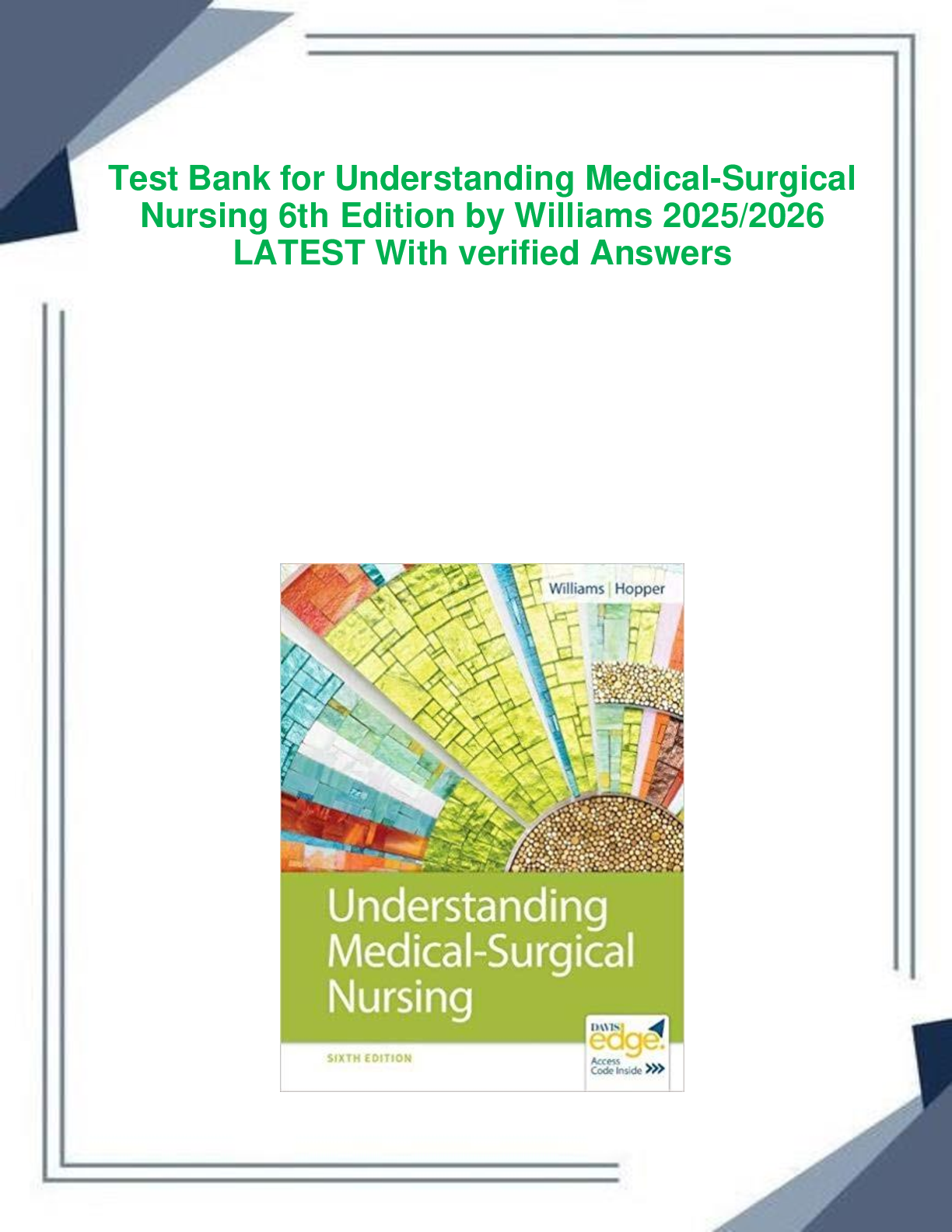
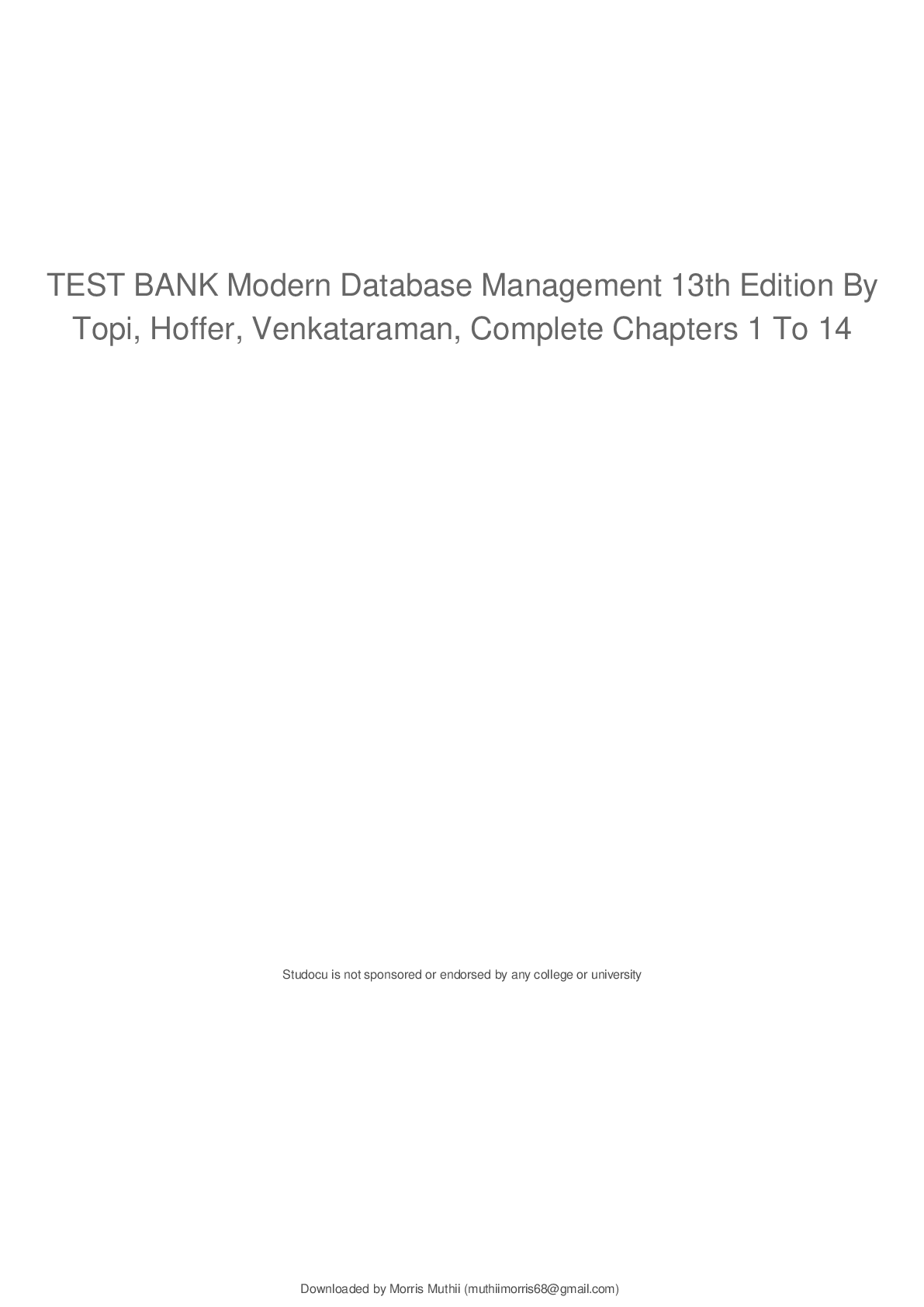
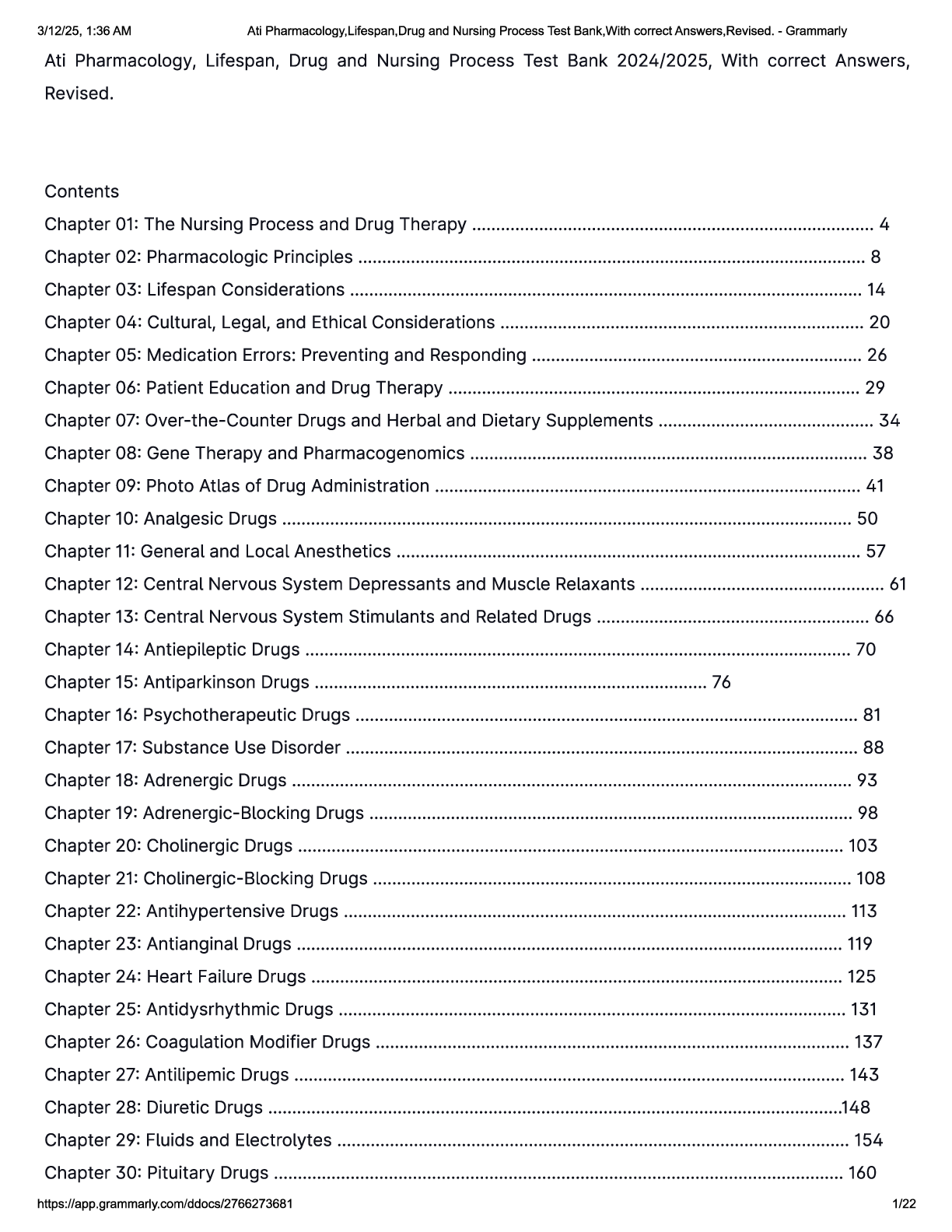
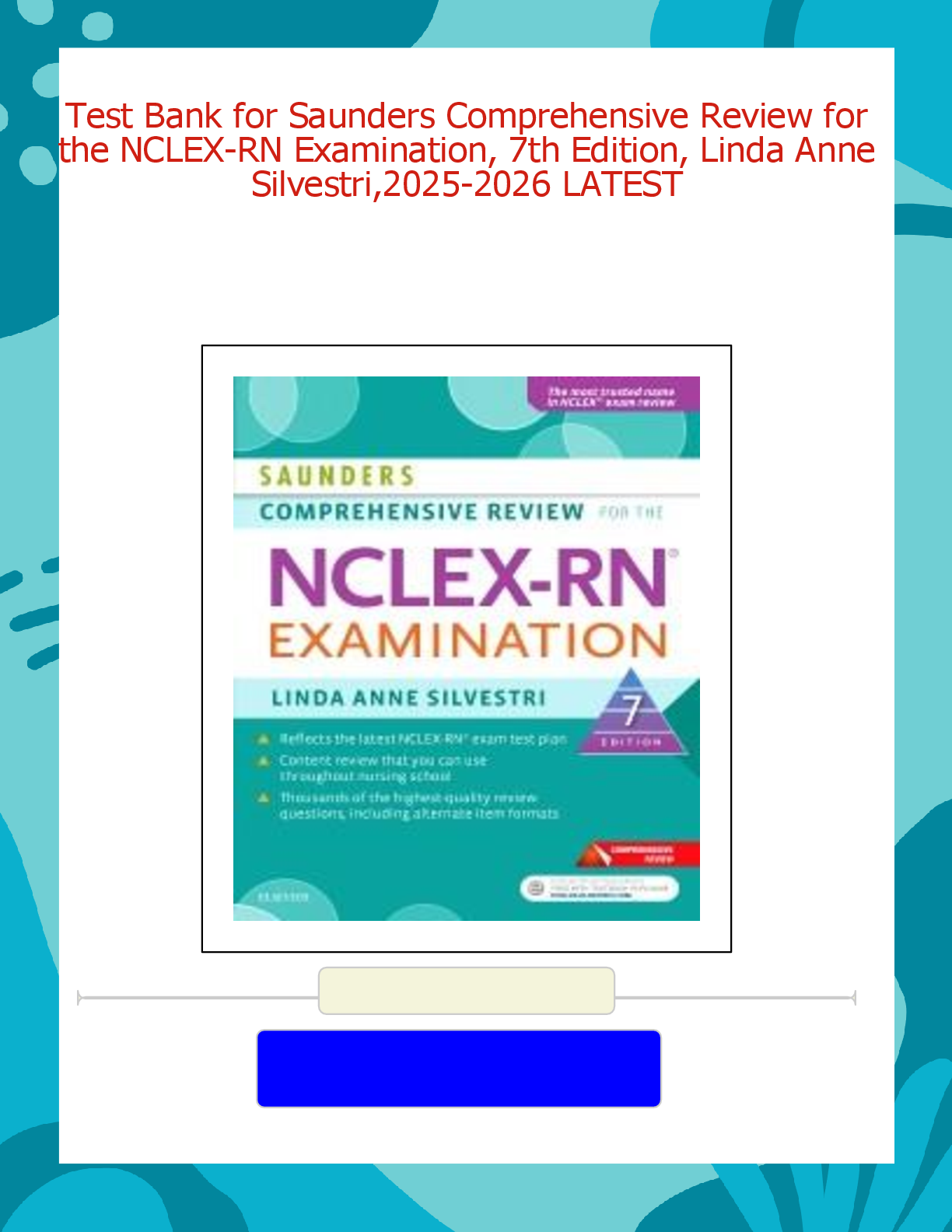




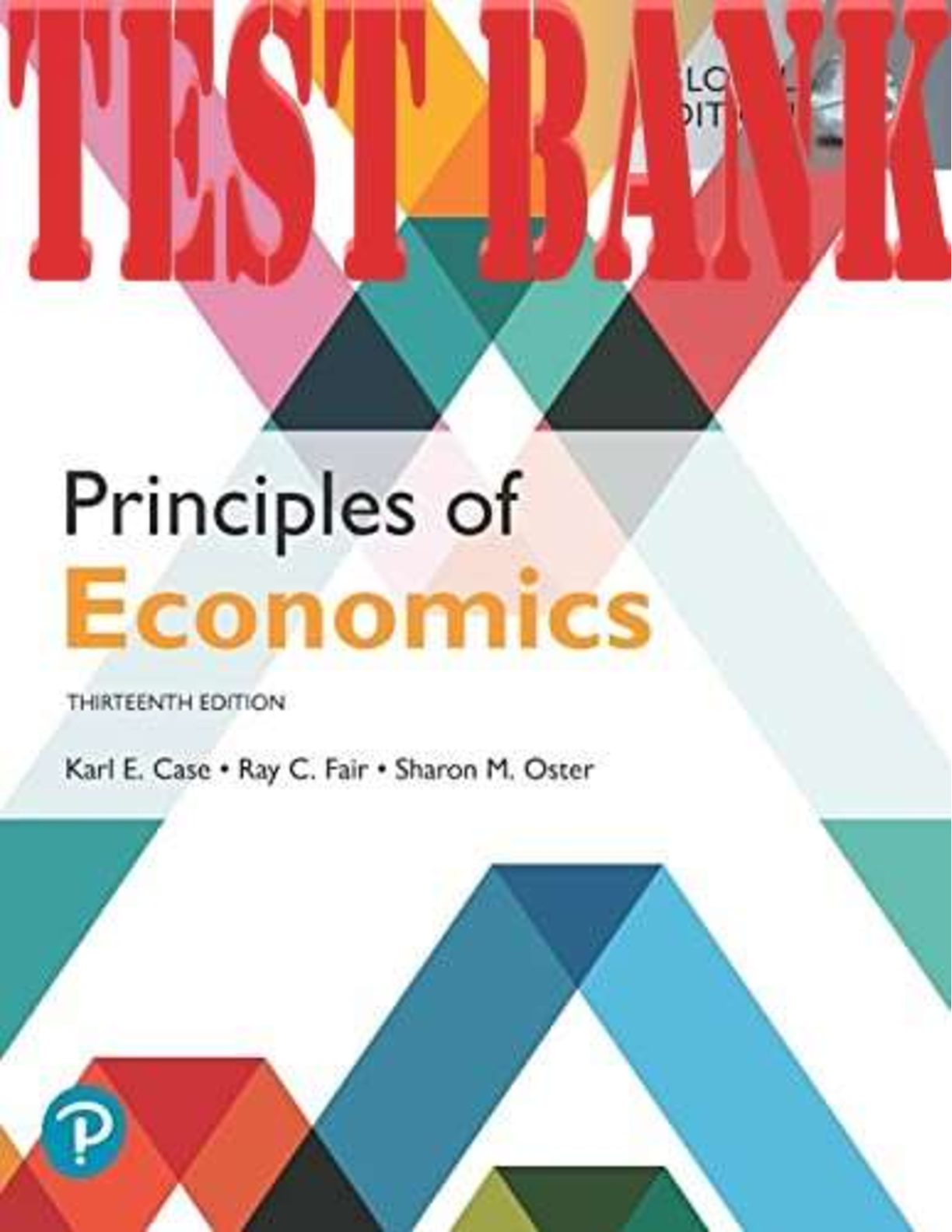






 (1).png)

